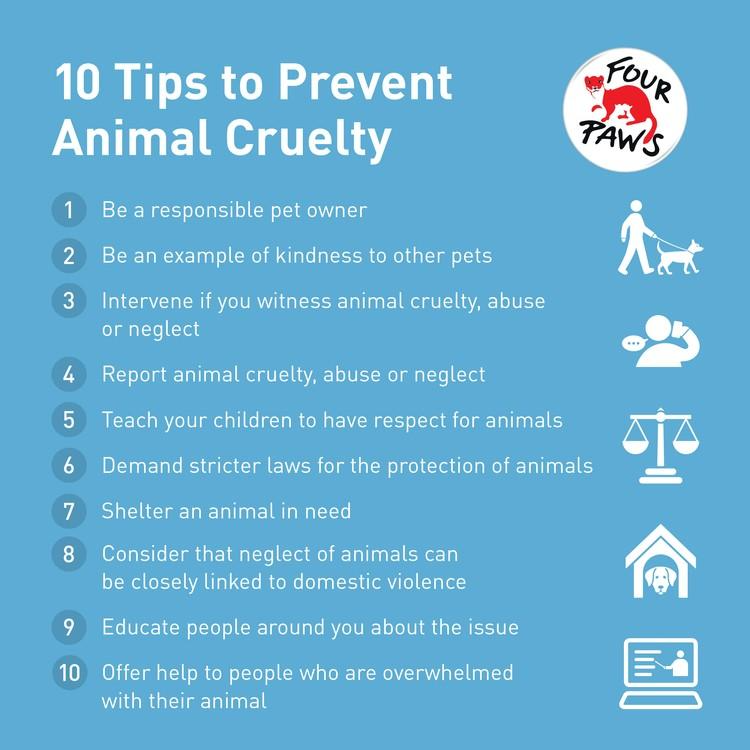Animal cruelty remains a blight on our society, infiltrating communities and tarnishing the lives of countless creatures. The fight against such cruelty begins at the grassroots level, within our own neighborhoods. This article provides a comprehensive action plan to address animal cruelty effectively, without compromising the safety of advocates or the animals in need.
Understanding Animal Cruelty
Before formulating an action plan, it is crucial to comprehend the various manifestations of animal cruelty. Acts of cruelty can range from neglect—such as failing to provide adequate food, water, or shelter—to intentional harm, including physical abuse, torture, or abandonment. Acknowledging these behaviors is the first step in recognizing the signs in your neighborhood.
Moreover, the psychological underpinnings of cruelty should not be overlooked. Perpetrators may act out of ignorance, a lack of empathy, or even deeply ingrained social issues. Understanding this complexity can inform your approach and make it more impactful.
Recognizing the Signs
Awareness is the cornerstone of intervention. Look for the following signs that may suggest animal cruelty:
- Excessively thin or malnourished animals, often spotted rummaging for food.
- Inadequate shelter, observed as animals left exposed to harsh weather conditions.
- Visible signs of injury or distress, such as limping, excessive barking, or abnormal behavior.
- Frequent loud noises or commotion originating from a particular residence.
Keeping a vigilant eye and offering a compassionate perspective can make a significant difference when addressing this troubling issue.
Documenting Evidence
If you suspect animal cruelty in your community, it’s essential to document your observations thoroughly. Take photographs and videos, noting dates, times, and specific details. This material will not only strengthen your case but may also be vital for law enforcement or animal control agencies.
Maintain a detailed journal that outlines your observations. This record can be influential when conveying the situation to the proper authorities. By being meticulous in your documentation, you equip yourself with the necessary evidence to advocate effectively for the animals’ welfare.
Creating a Network of Allies
Combating animal cruelty should not be a solitary endeavor. Build relationships with like-minded neighbors, local animal shelters, or advocacy groups. An engaged community amplifies the message and increases the potential for successful intervention.
Host meetings to discuss concerns and formulate collective strategies. Leverage social media to connect with fellow activists and promote awareness of animal rights issues specific to your locality. Engaging in community events can also foster camaraderie and unity, strengthening your position against cruelty.
Engaging with Authorities
Once you’ve documented evidence and assembled a team of allies, it is time to contact the relevant authorities. Reach out to your local animal control agency, police department, or humane society. Ensure that the evidence you collected is clear, concise, and compelling.
Be persistent. Authorities may not always respond promptly or adequately to reports of animal cruelty. However, remaining courteous yet firm in your communication can elicit a more favorable response and expedite action.
Proposing Educational Workshops
Education plays a pivotal role in preventing animal cruelty. Organize workshops or community sessions to raise awareness about responsible pet ownership, the importance of spaying and neutering, and the legal ramifications of animal cruelty. Collaborate with local veterinarians or animal behaviorists to offer expert insights during these sessions.
Consider distributing educational materials, flyers, or pamphlets that outline the signs of animal neglect or abuse. Providing clear steps on how to report such incidents can empower community members to take action seriously.
Working with Animal Welfare Organizations
Another effective strategy involves partnering with established animal welfare organizations. These entities often have the resources, knowledge, and networks to address cases of cruelty with expertise. Involve them in your community initiatives, and utilize their programs to extend the impact of your efforts.
Engagement can range from collaborating on outreach campaigns to organizing fundraising events for animal shelters and rescue groups. By harnessing the collective power of various organizations, you can not only address existing cases of cruelty but also enhance the overall welfare of animals in your community.
Promoting Responsible Pet Ownership
Integral to combating animal cruelty is the promotion of responsible pet ownership. Advocate for the adoption of pets over purchasing them, thereby giving homeless animals a second chance. Encourage local residents to participate in low-cost spay/neuter programs to help mitigate overpopulation, a significant contributor to animal neglect and abandonment.
Establishing a community pet ambassador program can also cultivate responsible ownership. Train volunteers to mentor new pet owners, sharing essential knowledge about care, nutrition, and training. With informed pet owners, the likelihood of neglect diminishes.
Utilizing Social Media for Advocacy
In an increasingly digital age, social media serves as a powerful tool for advocacy. Create online campaigns to spotlight instances of animal cruelty and raise awareness. Share your documentation, updates from local authorities, and success stories to inspire others to take action.
Utilize hashtags related to animal rights to reach a wider audience and mobilize support. Engaging visuals and poignant narratives can galvanize community action and compel individuals to join your cause.
Reassessing the Situation
Finally, it is important to continuously reassess the situation in your neighborhood. Establish a follow-up system to monitor the welfare of animals previously identified as victims of cruelty. By remaining engaged after initial interventions, you ensure sustained improvements in animal welfare.
Animal cruelty demands attention and action. Armed with awareness, documentation, community alliances, and resources, individuals can confront this challenge head-on. By invigorating local efforts, we foster a more humane society where animals are treated with the respect and compassion they deserve.








